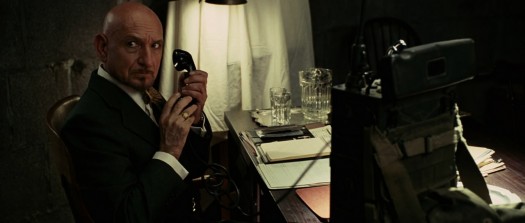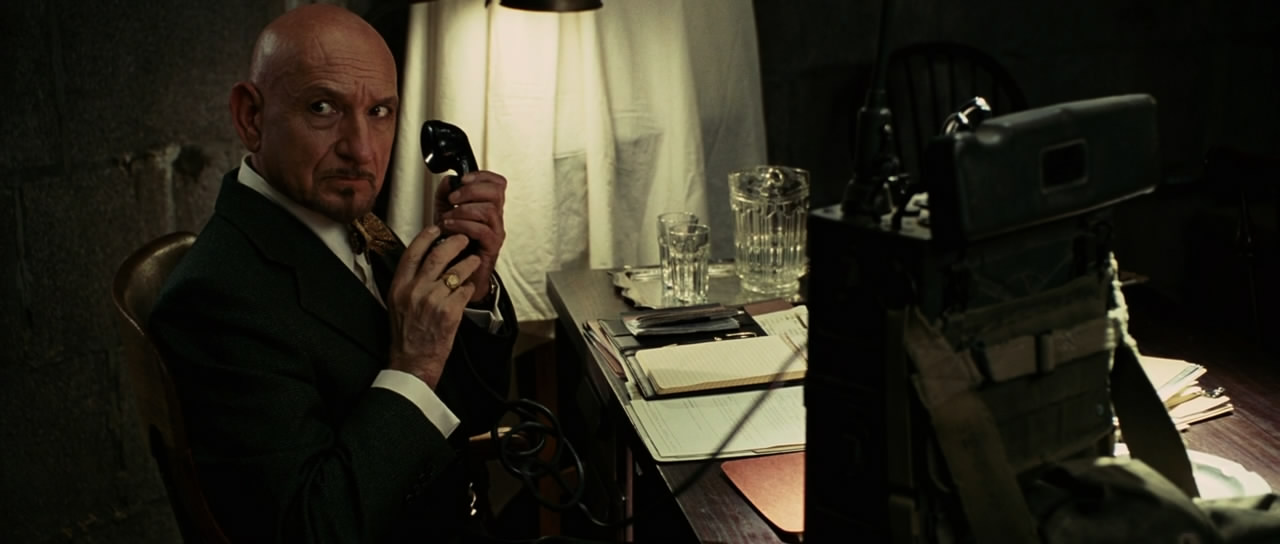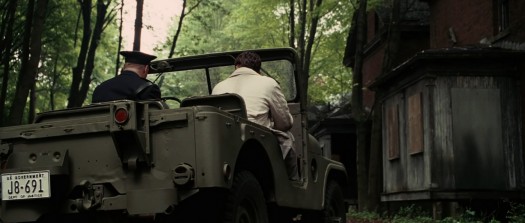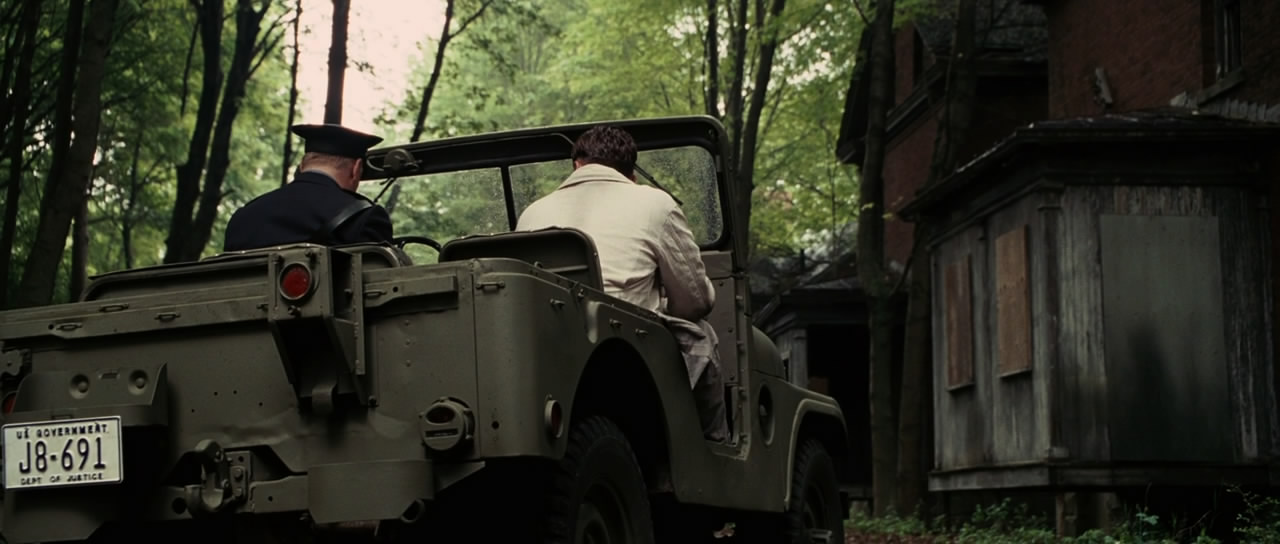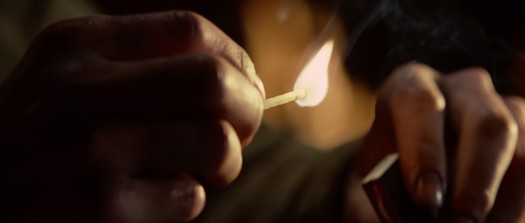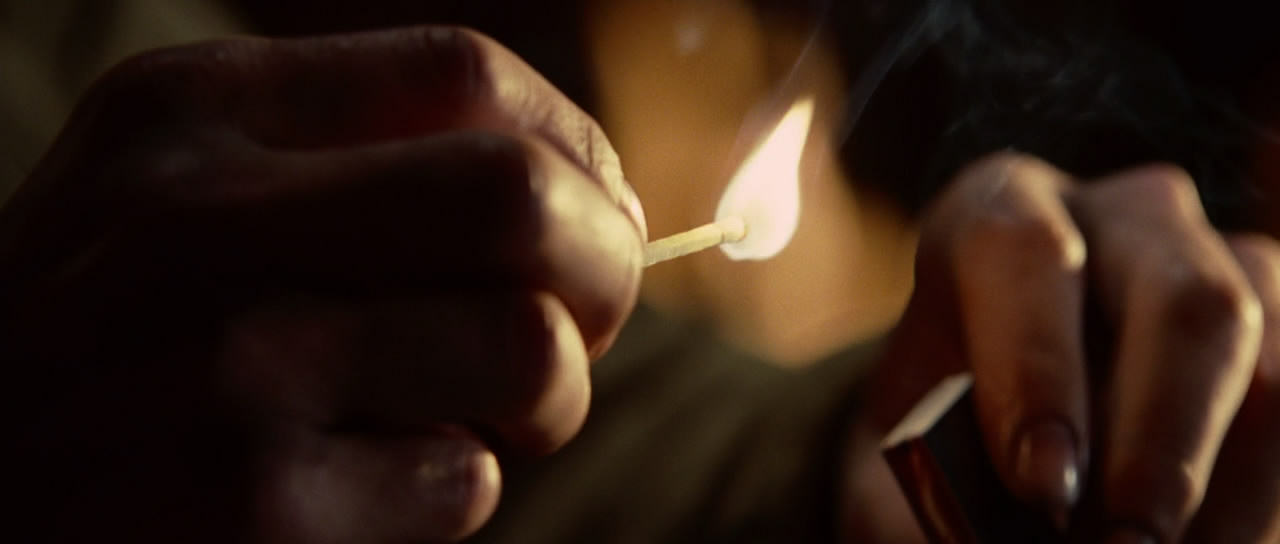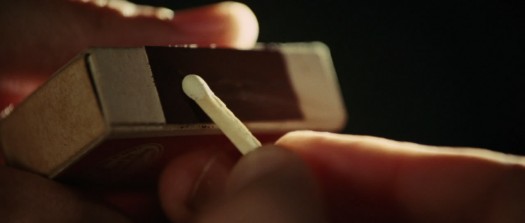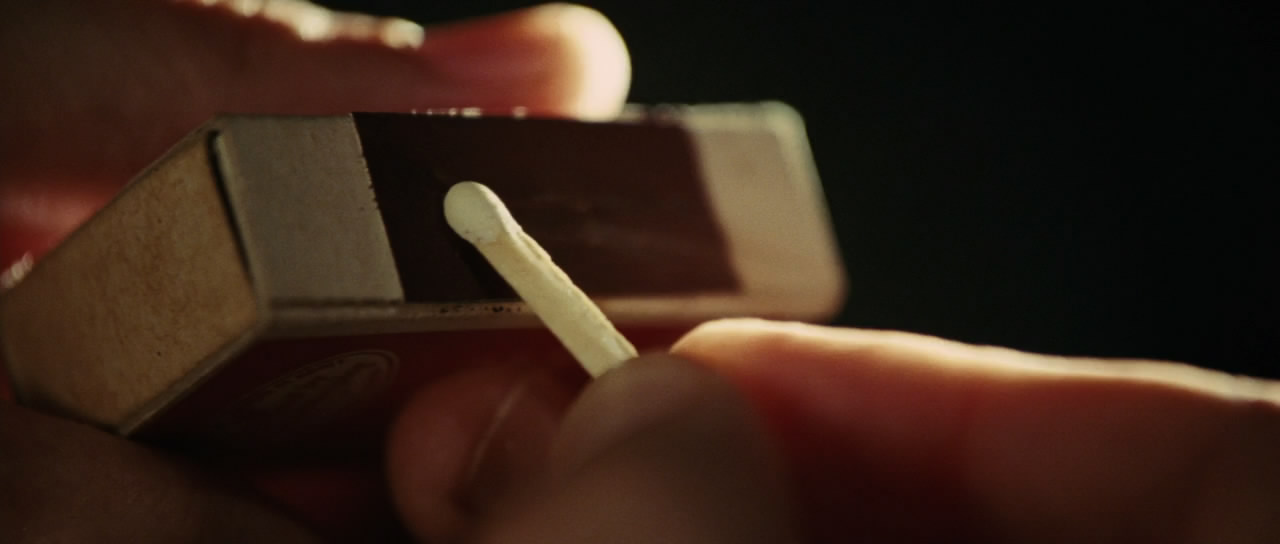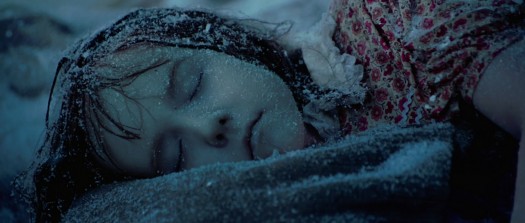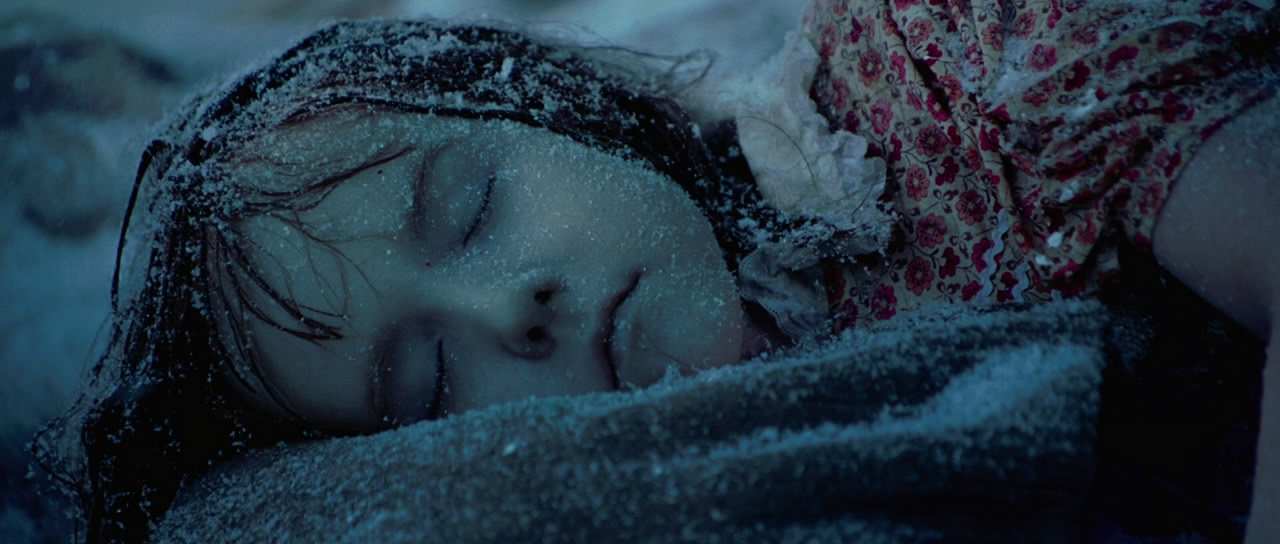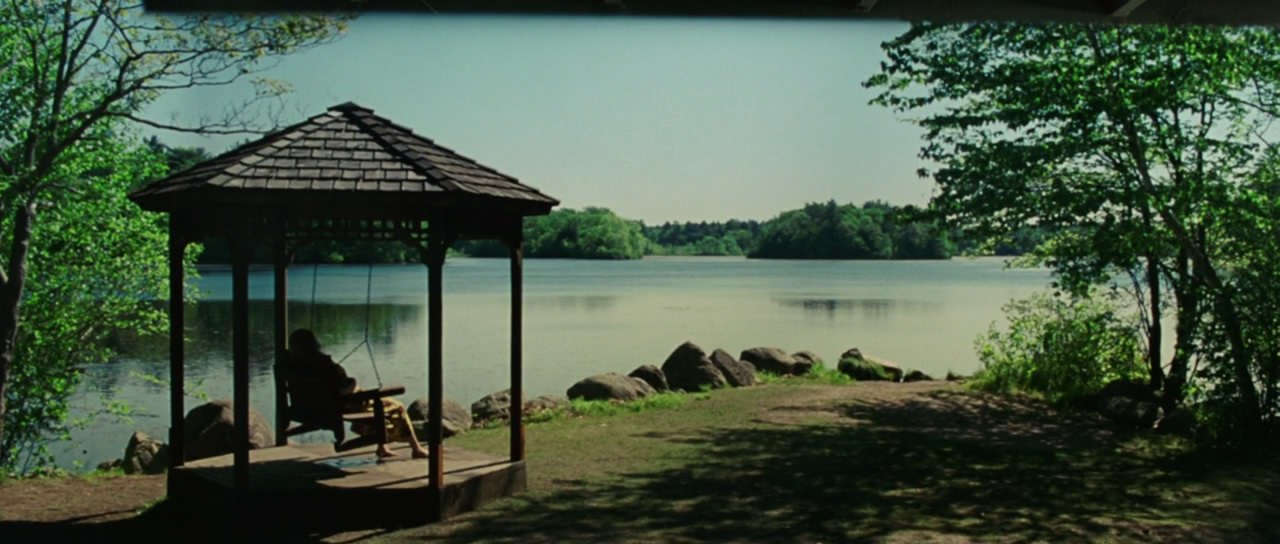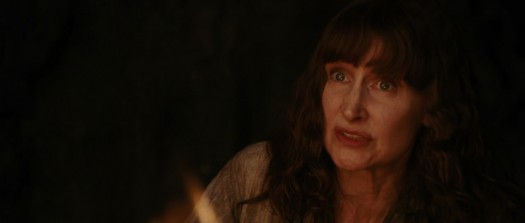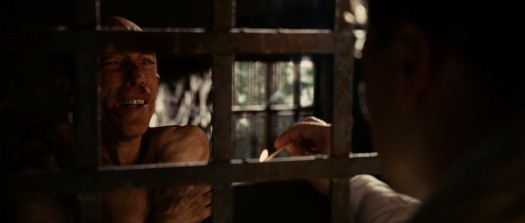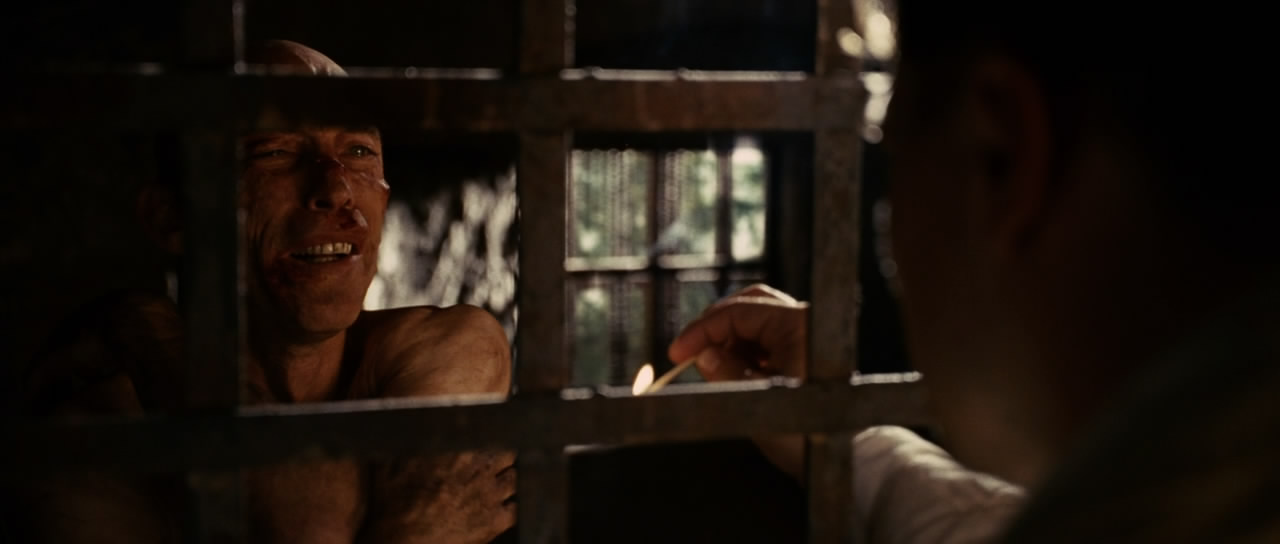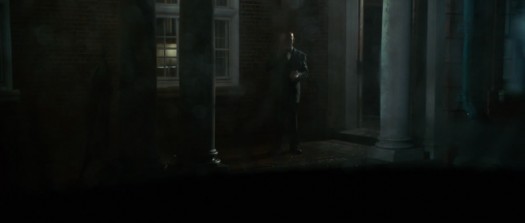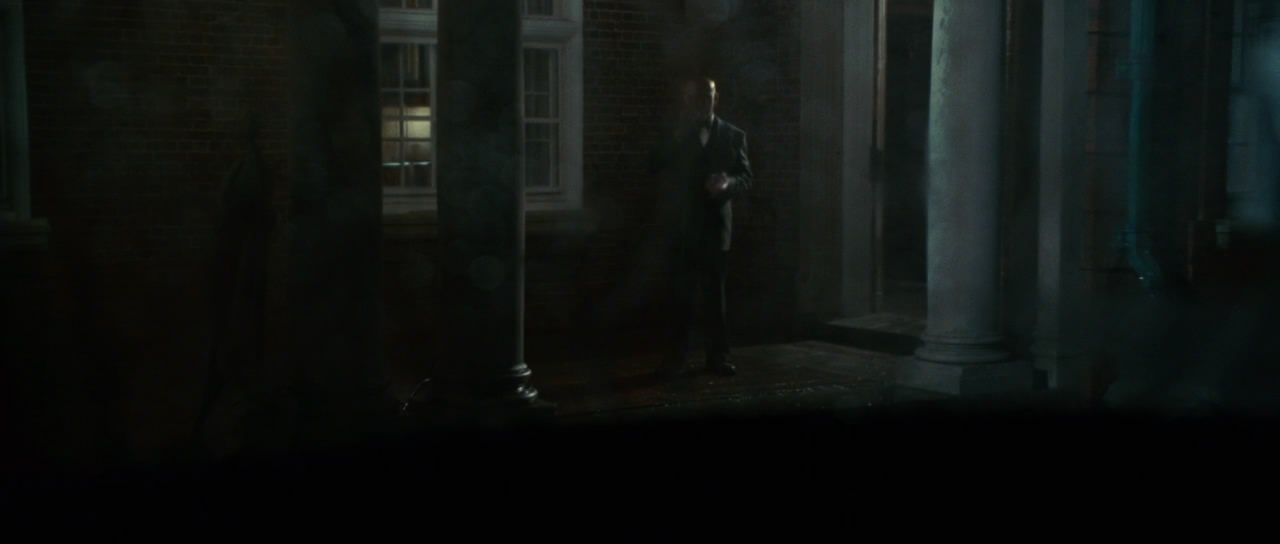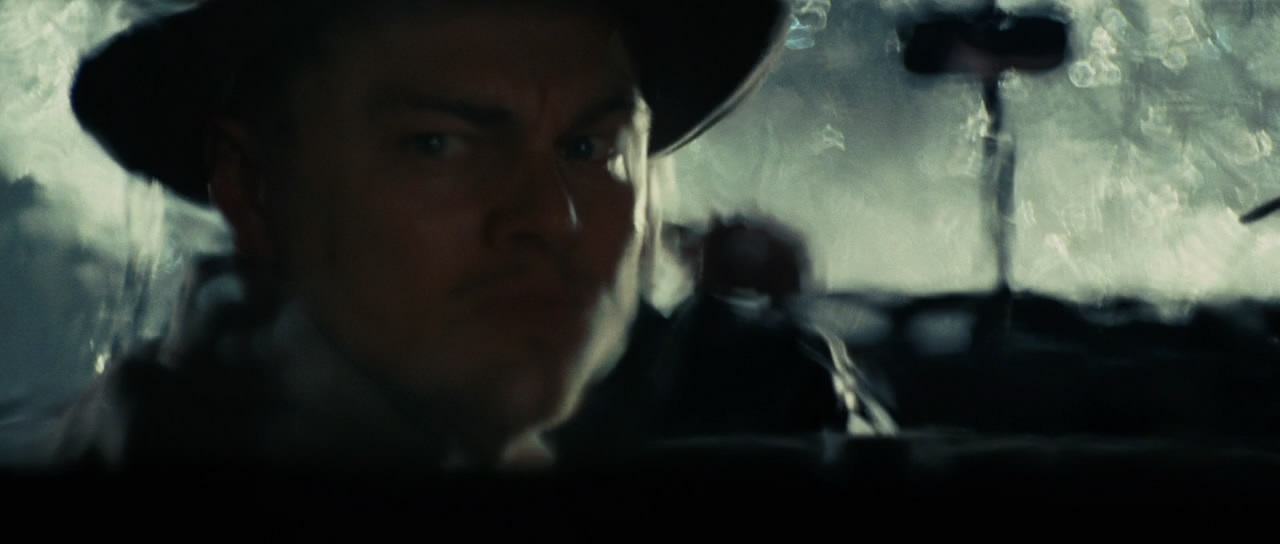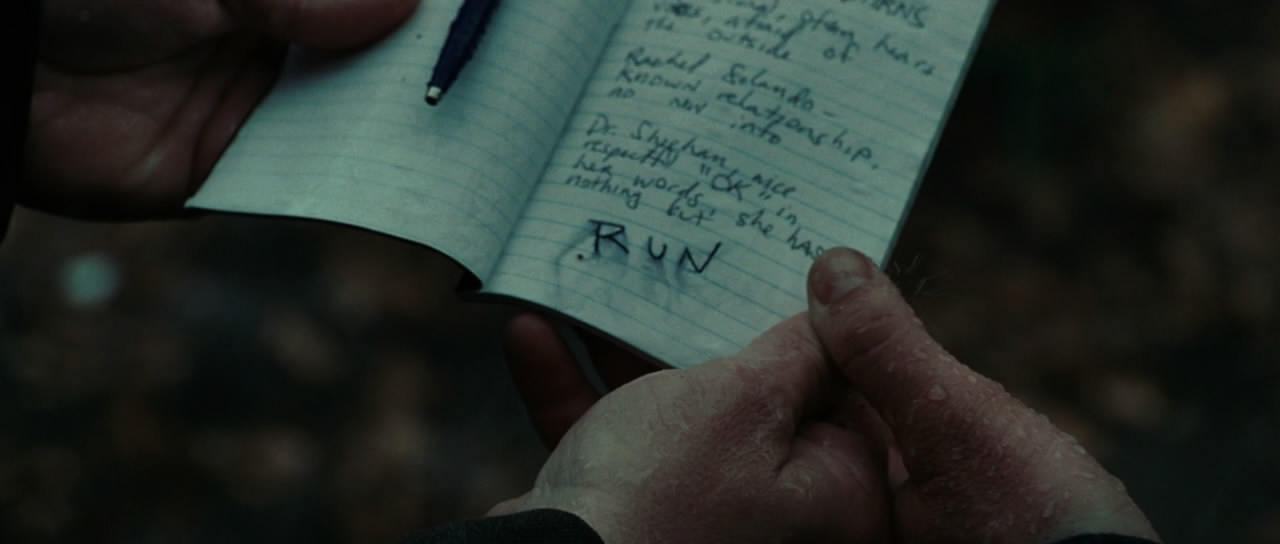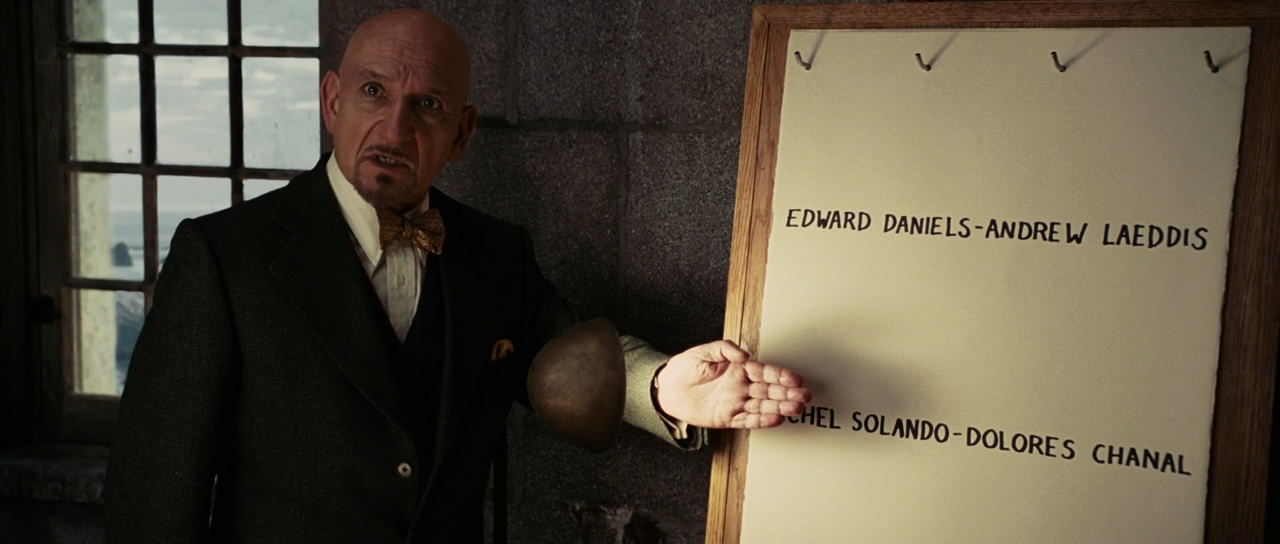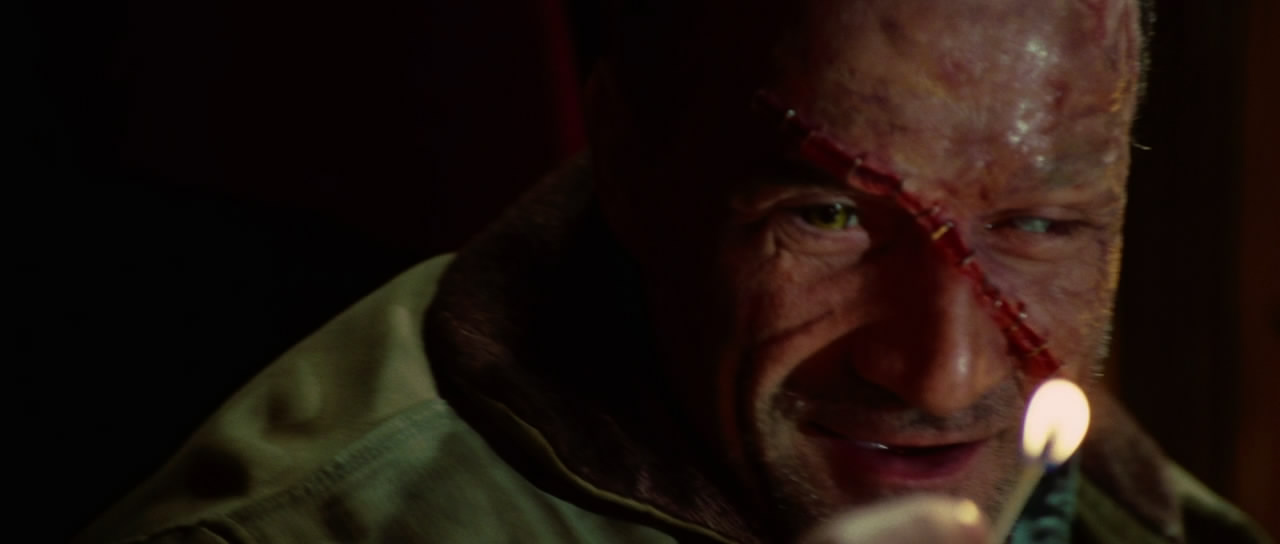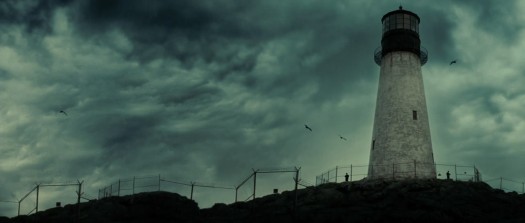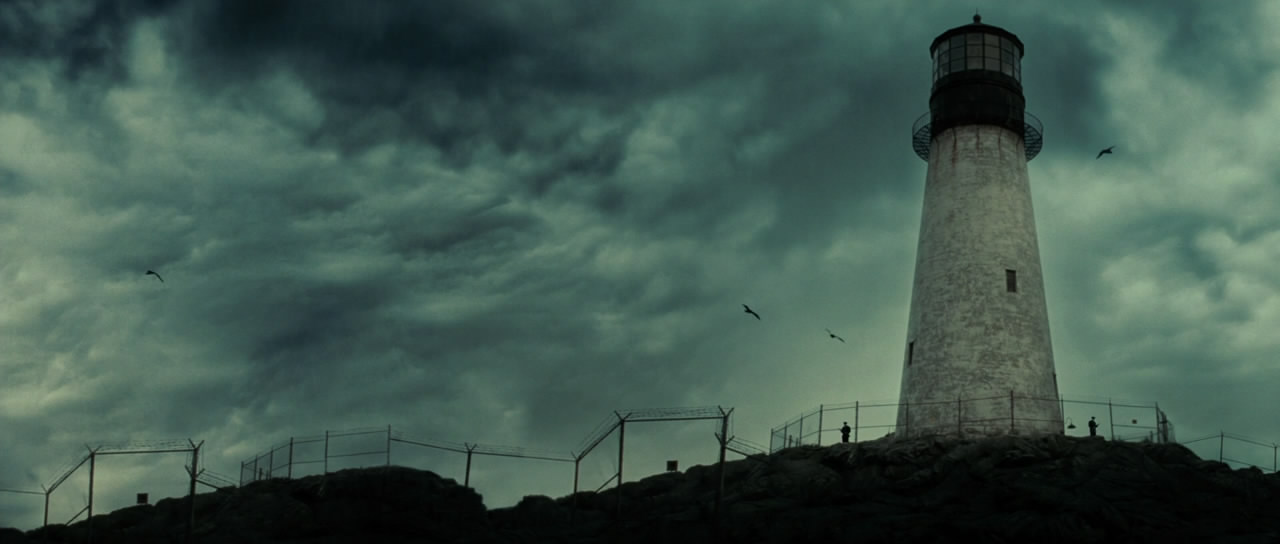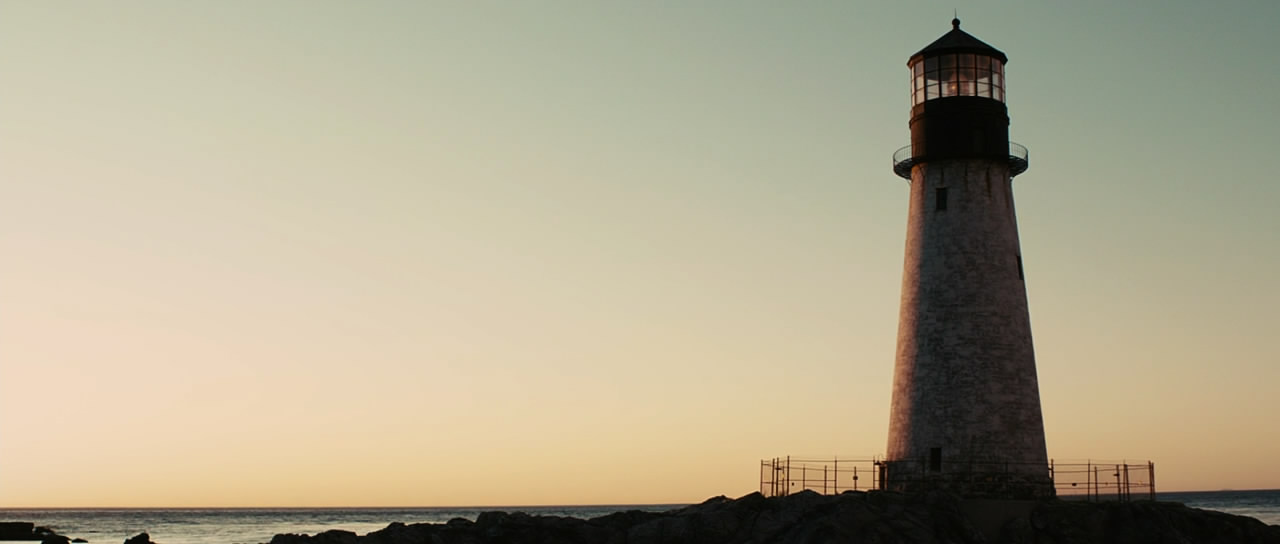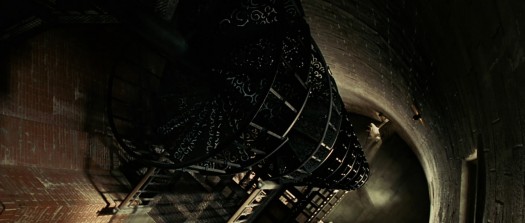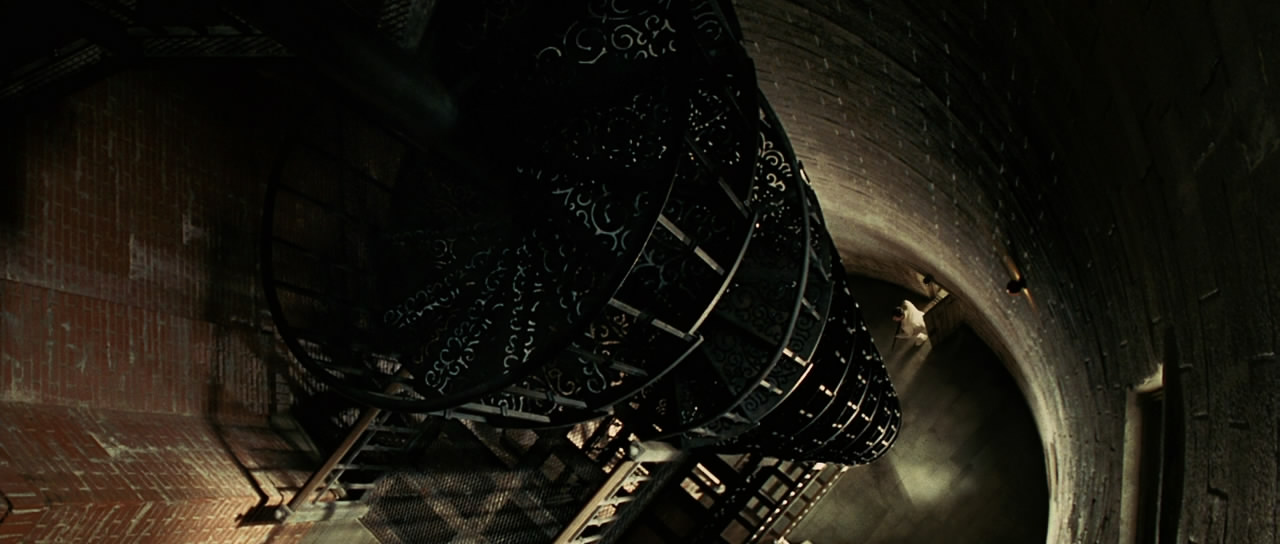After eight handwritten pages of notes taken over two viewings (aside from the first recreational viewing), I have only more questions and not enough answers as to the truth of Shutter Island. The easiest explanation is the one that is offered in a straightforward fashion by the film itself. However, there are lots of questionable bits. My hope in writing this is not to assert my own “absolute truth” and to impose it on others, but to bring to light the many things that poke holes in the straightforward narrative fed to us by Dr Cawley. What follows are a series of questions and points of consideration that I ask all of you to try to examine in order to form your own interpretation of what happened on Shutter Island.
Table of Contents
What Happened on Shutter Island? A Summary of Considerations
Before I present to you my narrative as based on the evidence I’ve provided, I want to show you a concise list of things that bring to light just how questionable the reality presented by the doctors really is. I invite my readers to keep this list in mind and to form their own conclusions on what really happened in this movie.
- Teddy makes sure to mention that “it was the smoke that got her, not the fire.” It is important to him that his wife was not burnt to death.
- Teddy never mentions his children by name or in his verbally recounted personal narratives. Additionally, when he says that four people died in the fire, he only mentions his wife specifically. Think about it: if your whole family died in a fire, wouldn’t you say that “my wife and kids died in that fire”, or “my whole family died in that fire”? In contrast, he does mention his wife by name.
- Everybody is trying to get Teddy to accept false memories. One big example is when Deputy Warden McPherson says that Teddy said himself that nobody would survive the rocky cliffs without shoes; in fact, it was Dr Sheehan who said this. Also note how everybody calls him Marshal over and over again, to reinforce the idea that he is indeed a U.S. Marshal.
- In the scene where he is denied access to the records, Teddy doesn’t know where his report is going to go: Dr Sheehan completes his sentence for him, saying that the report will go to the FBI (“Hoover’s boys”).
- We can’t really trust anything the doctors say: they proved their duplicity by trying to pass the nurse off as Rachel Solando.
- Dr Rachel Solando (in the cave) calls Teddy a Marshal, but she couldn’t have known that he is a Marshal if she was really on the run because Teddy only identifies himself as a cop.
- Teddy doesn’t know what a real revolver feels like: he confuses a cheap water pistol for a real one.
- The name ‘Andrew Laeddis’ looks made up when compared to the name of ‘Edward Daniels’. That is to say that Edward Daniels is the source of the anagram, not the re-arranged product.
- The quote, “Why are you all wet, baby?” is misspoken in Teddy’s ‘memory’ of what supposedly happened as described by Dr Cawley. Instead, he says, “Baby, why are you all wet?”
- Although this is a weak point, his wife Dolores calls him Teddy in his dreams.
- Why does Dr Sheehan call out the name Teddy at the very end oaf the movie?
Find your answers to these questions and watch it online now!
What really happened – An Explanation of Shutter Island From Beginning to End
Teddy Daniels’s real name is Edward ‘Teddy’ Daniels. He is a World War II veteran. Coming back from the war, he became the maintenance man at his own apartment building; he was never really a U.S. Marshal. He was married to Dolores Chanal, but has no children. He is a pyromaniac who burnt down his own apartment, killing four people—one of which was his wife. He is also a conspiracy theory buff.
In his extreme mental distress at learning that his fire killed his wife, he broke down and dissociated himself from reality. He created a new history. In this new history, a hideous man named Andrew Laeddis (really a reflection of the ugly and unbearable side of himself) was the man who “lit the match that caused the fire that killed [his] wife.” Andrew Laeddis was sent to Shutter Island. To explain his own existence on Shutter Island, Teddy Daniels remade himself as a U.S. Marshal, originally sent here to hunt down Andrew Laeddis.
In reality, the newly incarcerated Teddy Daniels was declared insane and was sent to Shutter Island. At Shutter Island, Teddy became the subject of an experiment. The experiment was one in which the psychiatrists would attempt to implant false memories into Teddy’s mind. Teddy, in a state of delusion, claimed that he was a U.S. Marshal to justify his presence. He met Dr Cawley who invented Rachel Solando for him to hunt down. Dr Sheehan, posing as Teddy’s fellow Marshal and partner Chuck, stays close to him to push him in the right direction. He encourages Teddy to continue the hunt (“I’ve never quit anything”); instills paranoid fear in him (the mausoleum scene); and plays upon that paranoia (urging him not to go to the lighthouse in an exercise in reverse psychology), all in an attempt to ensure that he reaches the lighthouse (in a highly unstable state) for the final event.
When Teddy reaches the lighthouse, he is confronted by the inconsistencies and flawed logic of everything that he has been going through. He is presented with a far more reasonable explanation, though it is a fabricated one. This is the point at which the experiment is judged to have either failed or succeeded. If Teddy accepts this fictitious account, the psychiatrists have succeeded in attempting to implant a false memory into a patient.
Teddy has been through this before, and he now realizes that there is no way out of Shutter Island. He tells the doctors that he accepts their narrative in order to avoid lobotomy. However, sitting on the steps outside, he reconsiders and decides that lobotomy would be better than chasing Andrew Laeddis for the rest of his life: he figures they’ll just try to keep forcing this lake house narrative on him over and over again. When asking whether it’d be “better to live as a monster or die a good man,” Teddy is making a choice to take the lobotomy and thus die a good man. He refuses to accept the reality that he is just a maintenance man whose wife died because of his pyromania, and is instead perpetually stuck in a delusion in which he is Teddy Daniels, U.S. Marshal hunting down Andrew Laeddis (an entity created in his dissociative disorder), the man who killed his wife.
Things to Question
Here are some things to take into consideration, questions to ask yourself to formulate your own interpretation of the film. What follows is the reasoning behind my interpretation.
Is Shutter Island really a government operated correctional facility for the criminally insane?
I like to start with this because it’s one of the first pieces of reality that is presented to us.
At the very least, it is affiliated with the military. The Warden drives a military jeep that has government plates, and in the ending lighthouse scene, Dr Cawley uses a military field radio to notify someone to tend to the guard that Teddy knocked out.
The Warden is also described by Teddy as an “ex-military prick” (this of course is not necessarily reliable or specifically confirmed: the orderly only says that he won’t “argue with you there”). Finally, the guards are using the M1 Garand rifle, a military weapon. Of course, I’m no expert on the historical use of military weaponry in non-military correctional facilities (such usage is more common at maximum security facilities in the modern day).
With that said, the first two points still stand. While there may be nothing inherently suspicious about a correctional facility run by the government, it would reason that an actual military-run prison—one that is not conducting any shady experiments—would have military police and not corrections officers. I’ll admit that this is a rather weak point, but it’s something to take note of nonetheless.
The Role Playing Game as a Brainwashing Experiment
Try watching the movie with the perspective that the doctors are all trying to impress their version and reality onto Teddy. Note how they always address him as Marshal. This is a way for them to reinforce the idea that he is indeed a U.S. Marshal investigating Shutter Island. They never ask him to recall anything. Instead, they simply present a narrative for Teddy to accept. It’s quite possible that they are experimenting with ways to implant false memories: not a bad way to create a patsy. Note: 2 May 2012. It’s also possible that calling him Marshal is an easy way for the writer to avoid committing the character to either identity (Teddy or Andrew). The novel might be a good source of information.
Want to compare the movie with the novel? Get the book now!
Earlier in the film, there is a scene in which Teddy is examining Rachel Solando’s room. Dr Sheehan is the one who points out the fact that Rachel did not bring the shoes. Deputy Warden McPherson was not present in this scene. Yet in a concurrent scene in which Teddy asks about the caves he sees in the distance, McPherson says, “You said yourself Marshal, she’s got no shoes.” Teddy never said this. It was Dr Sheehan. This is more evidence that what we are watching is an experiment in implanting memories. In a meta sort of way, it’s also a way to implant memories in the audience watching the movie: some people may “remember” that Teddy said that line. Clever, no?
Perhaps this whole role playing game that the doctors at Shutter Island created is actually a form of mind control in and of itself. Forget the lobotomies and other cruelties: what Teddy is going through is a cruel new experiment.
Was Teddy actually a U.S. Marshal?
This is not so clear. When he is getting angry at Dr Cawley for his lack of cooperation, he says, “We’re going to file our reports and hand it over to…,” fumbling with the correct government agency that would be in charge: Dr Sheehan finishes his thought, saying that the report would be given to “Hoover’s boys” (the FBI). Unusual for a law enforcement man who’s been on the job for a while, I’d say. Yet earlier, he was able to identify MI5 and the OSS as intelligence agencies.
What does this imply? It’s up for grabs, really. But maybe Teddy is just a conspiracy theorist obsessed with intelligence agencies. Perhaps when Deputy Warden McPherson tells him that “Executive Order 319 in the Federal Code of Penitentiaries” gives him final authority, Teddy’s leg was being pulled: maybe there is no such order. Just a thought.
But really, the questionability of Teddy’s status as a U.S. Marshal is evident in the ending lighthouse scene, when Teddy claims he knows that his gun is loaded because of the weight. However, he is entirely wrong: the revolver is a water pistol. It’s quite difficult to mistake a metal firearm for a cheap plastic one that can be broken by hand. Does Teddy really know what a real loaded revolver feels like in his hand? The dent in the barrel he described could be just a sign of his “highly intelligent and complex fictions.” All of this points to the fact that Teddy could very well not be a U.S. Marshal.
So if Teddy was not an actual U.S. Marshal, then what is he doing at Shutter Island? And if he wasn’t a Marshal, then what is he?
Note: 2 May 2012. Whether Teddy is a Marshal or not doesn’t seem to matter too much, I feel.
Teddy Daniels as Andrew Laeddis, Pyromaniac
It’s quite possible that he actually was the Andrew Laeddis that he described to Dr Sheehan: the maintenance man of his apartment building, the one who lit the match that burnt his house down. Perhaps Teddy Daniels is the pyromaniac. After all, there is consistent use of imagery depicting matches in Teddy’s hands. He also seems to be quite knowledgeable about how to start fires, especially big ones: he somehow knows how to set a car on fire, improvising with a tie and a pebble to create a fuse. I doubt that’s standard training in the U.S. Marshals.
There is compelling visual evidence that Teddy Daniels is indeed the pyromaniac. During a dream sequence, Teddy meets a scarred man (I call him Scarred Laeddis).
This scene contains the first use of the extreme close-up shot of a hand lighting a match. In this scene, that hand belongs to Scarred Laeddis. In the rest of the film, the only other time we see this same extreme close-up of a hand lighting a match in the same way is when we see Teddy lighting it. Thus, I posit that Teddy is this scarred man named Andrew Laeddis. I feel extremely strongly about this: considering these shots, it’s as if Scorsese is telling us that Teddy is the same person as the scarred man, the person who lights matches in the same way.
Psychologically speaking, the big ugly scar speaks to a reflection of the scarring of his psyche, as well as to the horrifying ugliness he sees in himself. Scar Laeddis offers him his flask of alcohol, saying “I know how much you need it.” This is Teddy’s dissociated identity speaking to himself.
So let us consider that Teddy is a pyromaniac. Teddy is thus the pyromaniac who set his apartment on fire, a fire that proceeded to kill his wife. Quite reasonably, he carries an immense amount of guilt for the death of his wife, which is why he soothes himself by saying that “it was the smoke that got her, not the fire.” Perhaps Teddy is not an actual Marshal. More likely, he is in reality only a World War II veteran-turned maintenance man who burned down his own apartment building. In which case, what is he doing on Shutter Island? It could be for any number of reasons. If he is just a pyromaniac, perhaps he was taken to the island the first chance they got: when he was caught for committing arson.
Teddy’s Children
Because Teddy never mentions his children in his personal verbal narratives (they appear only in hallucinations and dreams), it’s quite likely that he indeed has no children. Remember, he only mentioned his wife specifically amongst the four people that died in the fire at his apartment. Who on earth wouldn’t say that their children died in the fire as well? Teddy in fact had no children.
For one, Teddy never sees the boys at all: not in hallucinations, not in dreams. The only one of his “children” that he saw was the little girl. And that little girl first shows up when he dreams of the frozen bodies at Dachau.
How can Teddy have hallucinations of Rachel Laeddis (his daughter) if he never had any children?
Remember, the doctors said that he had regressed many times. This means that it’s quite within the realm of possibility that he was exposed to those same photos that he was shown at the last lighthouse scene. The daughter never appears anywhere but in hallucinations. Besides, there is even stronger evidence that his supposed daughter is ac tually the little girl he saw in Dachau.
What is the Lake House Narrative?
The lake house narrative is the story that Dr Cawley and Dr Sheehan tell Teddy is what actually happened. According to them, his wife burned down their apartment. From there, they moved to a lake house where she drowned their three children in the lake. Teddy then killed his wife – presumably to “set [her] free”.
This narrative is completely false: it is a version of reality that the doctors are trying to get Teddy to accept. Perhaps it is only a mistake in the filming of the movie, but a closer examination of the lake house scene shows that the children’s bodies don’t even appear in the lake until after Teddy starts looking for them. Not only that, one should note that Teddy says, “Baby? Why are you all wet?” when he is “recalling” this lake house narrative, rather than “Why are you all wet, baby?” as repeated by Dr Cawley as well as his wife in his hallucinations.
Who pushes Teddy along on his journey?
Everybody works to move Teddy through the experiment. Dr Sheehan is always the one to push Teddy along in a particular direction. In the scene where they are sleeping in their bunk beds, he nudges Teddy to continue the investigation. In Ward C, George Noyce suggests that Laeddis is in the lighthouse. When they get close, Dr Sheehan, in an act of reverse psychology, tries to dissuade him from going; at which point Teddy becomes suspicious of Chuck’s identity and tests him with by asking him how the weather is in Portland, knowing that Chuck is actually supposed to be from Seattle. Teddy’s movement throughout the entire film is influenced by key players, a reminder that he didn’t go down this journey with free will.
Is the “real” Rachel Solando real?
Dr Rachel Solando (as opposed to Nurse Rachel Solando) is found by Teddy in the cave. When he says that he’s a cop, she slips up and says, “You’re the marshal.” If her story is true, if she was in hiding because of her inquisition into the conspiracy, then she couldn’t possibly know that he’s a U.S. Marshal: he’s in an orderly’s uniform. There isn’t any real Rachel Solando. Rachel Solando is entirely fictitious, an entity dreamed up by Teddy Daniels’ tortured mind. Think about it: the conspiracy theory she talks about is exactly something that a crazy patient would say. This Dr Solando is really just Teddy’s imagination at work. Where’s my evidence that she’s only a figment of his imagination, you ask? The white flashes.
What’s with the white flashes/lightning flashes?
Another visual theme in Shutter Island is the white flash. It happens when Teddy is sleeping in the orderly bunk, where we first see the warden (played by Ted Levine). Teddy goes to sleep and has a crazy dream. Then he “wakes up” in the same room he fell asleep in and sees his wife. We see very quickly that Teddy is actually just having another dream: he “woke up” from one dream into another one. When he really does wake up, it’s a white flash of lightning that wakes him. Later, when Teddy spends the night in the cave with Rachel Solando, he also awakes with a white flash. These white flashes are a reminder that Teddy is not experiencing true reality.
Who is George Noyce?
George Noyce is very likely exactly who he appears to be: someone Teddy met outside of Shutter Island. The truth is that he was part of their psychological experiments and that he was imprisoned for stabbing those men. When Teddy came along to Shutter Island, they needed someone he knew from outside the experiment, someone he could trust (at least to a certain degree). Thus, the folks on Shutter Island took George Noyce out of Dedham Prison and put him back on Shutter Island. So it is true that he is here because of Teddy “and Laeddis.” To Noyce, all he knows is that Laeddis is some guy that Teddy is hunting down. He doesn’t necessarily know that Laeddis is just a fictional character created for the experiment. But he does know that all of this is an elaborate game made for Teddy.
Water imagery in Shutter Island
Some may interpret this to the benevolent reality that surrounds and traps him. This is a convenient explanation, but let’s take a closer look at what water actually does in the film.
Water surrounds Shutter Island. A violent storm—a form of water—serves to keep Teddy Daniels trapped on the island.
Water serves to obfuscate Teddy’s view throughout the film. Rain makes it difficult for him to see out of the back seat of the car. Rain smears the word RUN written by Mrs. Kearns in Teddy’s notepad. The ocean separates him from the lighthouse, prevents him from leaving the island. Supposedly, the lake is the cause of his children’s death. Water, in other words, is bad news for Teddy Daniels.
Teddy Daniels is Edward Daniels
The true identity of Teddy Daniels is Edward Daniels, and not Andrew Laeddis. The ending lighthouse scene consists of Dr Sheehan and Cawley feeding Teddy the lake house narrative, and implanting the idea that Teddy is actually Andrew Laeddis. These are folks feeding good old Edward ‘Teddy’ Daniels horse manure by the truckload. If Teddy accepts his identity as Andrew Laeddis, he must also accept the lake house narrative. Both of these are falsehoods though. Everything—and I mean everything—coming out of the staff’s mouths cannot be trusted. They are all in on some massive game. Everything about Andrew Laeddis is false. Besides, when you think about it, the name Laeddis looks made up. Edward Daniels seems like a much more plausible name, especially considering the time period.
Finally, in the last scene of the movie, Dr Sheehan calls out, “Teddy?” At this point, it is clear to him that Teddy is no longer ‘crazy’ and is of relatively sound mind. Teddy supposedly has accepted his identity as Andrew Laeddis. If he really was Andrew Laeddis as the doctors proposed, then Dr Sheehan would call him Andrew by instinct, considering the role playing game was supposedly over. Instead, he slips up and calls him Teddy because Teddy Daniels’s true identity is Edward ‘Teddy’ Daniels.
Andrew Laeddis: Fact or Fiction?
So if Andrew Laeddis and the history attached to the name is a falsehood, that means Teddy Daniels is Edward Daniels the pyromaniac who killed his own wife. So what is he doing on Shutter Island? Well, he got sent to prison after getting caught for setting the fire, and then he was transferred to Shutter Island. This is the narrative that Teddy invents for Andrew Laeddis, but it is actually his own story.
The reason he transfers his personal history to a dissociated identity by the name of Andrew Laeddis is because he carries an immense amount of guilt for killing his own wife (when he set his apartment on fire), so much that he assuages himself by saying that she died from smoke and not from burning (explained on the ferry scene, a point he emphasizes, almost as if he is telling himself for his own benefit and not just for Chuck). Instead of dealing with reality, he creates the alternate identity of Andrew Laeddis, a separate entity who is the man who killed his wife. Then, he makes himself a U.S. Marshal and gives himself the task of finding Laeddis. The doctors at Shutter Island are conducting experiments. In this experiment, they allow for his fantastic alternate reality to be played out. At the end—if the doctors were benevolent—Teddy should be able to see that there is no Andrew Laeddis and must accept the truth that he is actually the one who killed his wife in a fire.
Instead, the doctors are experimenting with implanting false memories and attempt to convince Teddy that he shot his wife after she killed his (non-existent) children, and that he is in fact Andrew Laeddis. So far, he has not accepted the doctors’ proposed reality. Assuming he gets to the vital point at which the whole game culminates (the lighthouse scene), then he must either accept the reality or not. If he does not, it counts as a regression. They could then detain him on the ferry until his memory ‘resets’, at which point he regresses into his identity as Teddy Daniels the U.S. Marshal, hunting down the man named Andrew Laeddis, the man who burnt down his apartment and killed his wife.
However, back in the real world, the idea to hunt down Rachel Solando was introduced in an experiment. The key point here is that Teddy came to Shutter Island insane, believing he was a Marshal hunting down Andrew Laeddis. Only later, when they started experimenting, did Rachel Solando become part of his hunt.
The Lighthouse
The lighthouse isn’t in the same place as the beginning of the movie. Or at the very least, something changed. Look at these screenshots.
The first one is from the first sighting, the second one is from the last shot. As you can see, the first lighthouse had a great length of land lined with fences. The second shot shows the lighthouse without the long fences. This implies that the lighthouse was changed. Are there two lighthouses? I’m not sure, but at the very least, this should seem suspicious.
The thing aboutthe lighthouse is that it is actually home to patient experimentation. If there was no conspiracy going on, then Deputy Warden McPherson’s claim that the lighthouse housed a sewage treatment plant would’ve been validated when Teddy finally got in there. Instead, that whole lighthouse was staged as the final part of the experiment. It was completely empty, save for the little office Dr Cawley set up on the top floor. I’m no plumber, but I highly doubt that it’s easy to dismantle sewage treatment equipment and leave no sign of it.
Is Teddy really crazy?
Most people ask this question because they want to know whether Teddy Daniels is Teddy or Andrew. My interpretation is that Andrew Laeddis is a fictional identity that is being forced upon Teddy. But I also think that Teddy had to be a little crazy to end up on Shutter Island to begin with: he is, after all, a pyromaniac. He shows that he is capable of developing fantastic narratives, evidenced when he quickly invented a story for how the water pistol in his hand was real, loaded, and actually his, complete with a backstory for the “dent in the barrel.” He has hallucinations, but those may be the result of the cigarettes and pills that are given to him. But that doesn’t mean that Shutter Island is not home to a bunch of psychiatrists with military affiliations who conduct experiments on the patients.
Is it better to live as a monster or die a good man?
In the much debated ending of Shutter Island, Teddy asks whether it’s “better to live as a monster or die a good man.” He then goes willingly to receive his lobotomy. The interpretation: he is saying that he would rather effectively die (by undergoing a lobotomy) as a good man. But why?
The fictional lake house narrative is unbearable to Teddy because his own wife killed his children, and he, in emotional anguish, misguidedly killed his own wife. In absolute reality, he is a pyromaniac who killed his own wife. Either of these realities is too painful to accept.
Thus, there is only one scenario in which he can live with himself: when he deludes himself into believing that he is Teddy Daniels, U.S. Marshal on the hunt for Andrew Laeddis (his dissociated tortured self), he is the good man tracking down the man who killed his wife (a man who is not himself).
Final thoughts
As you can see, I reject the straightforward narrative that the doctors present. There are far too many suspicious factors at play. So if we reject that narrative, what about Teddy’s? There’s a problem with his narrative too, because he’s off his rocker. Because I could trust neither the doctors nor Teddy himself, I was left to my own devices to construct a narrative.
Of course, there are many issues with all interpretations of the story, mine included. Inevitably, there will be holes in anybody’s version of the “real” events. Perhaps the point is that there is no definitive version of the real events. Reality is a slippery thing, and our personal narratives are always colored by our most recent memories. From an artistic point of view, perhaps this is what it feels like to be insane: to be unable to discern reality from fantasy, to be unable to tell truth from fiction.
With regards to cinematic concerns, I have yet to determine the importance of the fire or water imagery. I still don’t know the significance of the repetition of the record player. Perhaps given more time, I’ll discover the themes behind the usage of such devices. But in the mean time, I am satisfied with this conclusion, given all of the visual and thematic evidence.
I do urge all of us to consider that we are watching a film; we should be mindful to keep to the director’s vision—not the novel’s writer’s vision—and to use the visual language of cinema as the lens through which we should examine this film. Speaking to the point of interpretation, I am of the school of thought that what a creative work’s creator says about his own work is not nearly as reliable as what we can conclude for ourselves: artists can say whatever they want about their work, but it does not necessarily reflect what is actually experienced. I am partial to the New Critic and deconstructionist school of theory; and this particular analysis, while not necessarily written through any strict theoretical lens, tends towards the deconstructionists. The film has far too many suspicious absences and omissions, contradictions, and conflicts for me to consider it to be unified: I find that the meaning and implication of the film is not what is suggested to us by the surface narrative of the film. I believe that the latent content says volumes more about the film than the overt content does.
Author’s note: This is a place for intelligent discussion. Please be productive when writing your comments. If you are going to provide your point of view, please provide us with at least a modicum of reasoning. Frankly I don’t care at all what you think happened unless you also express your reasoning. I will delete any comments that do not add to the discussion. I will also delete all comments with any sort of negativity in it. Be civil, be smart. Thanks.
